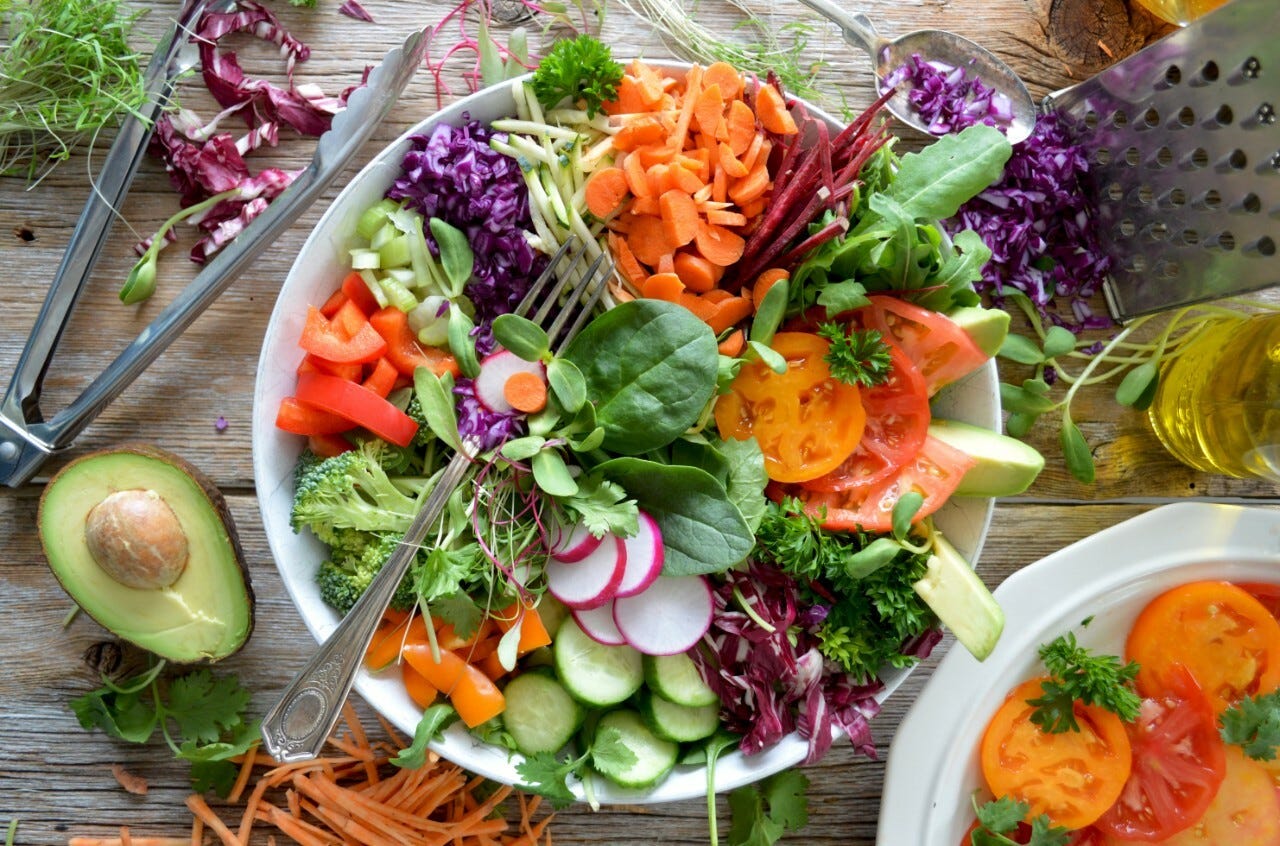
As the weather gets warmer, the frost disappears, and the garden begins to sprout, we know springtime is here. A fresh crop of fruits and vegetables, brightly coloured and bursting with nutrients, these bundles of goodness are just waiting for you to spring clean your diet and include them in your daily routine.
The more the merrier for a healthy diet
The more the merrier when it comes to vegetables and planning them in your healthy diet. Variety and quantity are key. Eating a vast array of colours equates to a range of vitamins, minerals and phytochemicals, as these compounds are responsible for many of the colours in plant foods. As 93% of Australians are not eating the recommended 5 servings of vegetables a day[1], this is definitely a habit to ‘spring’ into.
Making changes to your diet
Do you feel overwhelmed when you` think about making dietary changes? Rather than overhauling your whole diet at once, try for one change at a time. When this has become a habit, move onto including the next change. This can make it easier to sustain long term, after all, it is about making new habits long-lasting to have a positive impact on our health.
1. Plant a herb or vegetable garden
The whole household can be involved from planting to watering and then best of all, harvesting. If you don’t have a garden, pots will do. It is surprising what you can grow in a small area. Silverbeet and lettuce are easy to start with and parsley keeps on giving, growing just about anywhere. A cherry tomato plant produces bite-sized balls of goodness and work well in a pot or the ground. You may also like to start a compost bin.
2. Plan a spring picnic
The weather is warmer, the grass soft underfoot and we can restore our vitamin D levels with some sunshine. Start with packing the fresh food; cut up fruit, vegetable quiches, salads and wholegrain bread. Some hard-boiled eggs, cans of fish or bean salads add important sources of protein.
3. Visit a fresh fruit and vegetable or farmers market
Instead of coffee and cake at the local café with friends, switch it up and do the weekly shopping at a local food market together. Once the fresh spring produce is in the fridge you are more likely to cook with it and therefore increase the plant foods in your diet.
4. A new spring routine
Break away from your usual routine. Try adding a different vegetable in your shopping basket and include it in a few recipes each week. Good ones for spring are asparagus that you can add to a stir fry, grill on the barbeque or roast in the oven. Beetroot, rather than from the can, try freshly roasted with your roast or added to salad. Artichokes are ready in spring, so have a go at cooking artichoke hearts.
5. Swap to wholegrain carbs
During winter the white carbs can be comforting. Be conscious to swap white for wholegrain, there is no need to go low carb, just quality carbohydrates. Try for 70% of the time e.g. brown rice, wholemeal pasta, wholegrain bread.
6. Healthy fats
Buy a fresh bottle of extra virgin olive oil. The season’s olives have been harvested in autumn and early winter with fresh oil therefore in good supply. Look for local, fresh, and always extra virgin olive oil. Drizzle it over those fresh spring vegetables.
7. Go vegetarian one meal a week
Swap one meat meal a week if you are a big meat eater for beans, otherwise known as legumes. Research shows that including beans in your diet will reduce the risk of chronic disease. One study showed a 20 gram (~1 tablespoon) increase in legume intake was linked to a reduced risk of morbidity (up to 8%) from any cause over the seven-year study period[2]. Try lentil patties, chilli con carne based on beans or soup.
8. Go nuts
For a daily snack choose a ‘healthy handful of nuts a day,’ and slash the sugary biscuits. Nuts could be the healthy diet secret you are looking for. Although nuts are high in healthy fats that our body needs, research shows they are not associated with weight gain[3], in fact they may contribute to the opposite. Move over sweet biscuits and chips; nuts are moving in.
9. Mindfulness
Last but not least, slow down and smell the roses! The roses are blooming so use this as a reminder to eat slowly and savour the flavour. It is easy to overeat when we guzzle food down. Give time for the message to travel from our stomach to our brain to say we are satisfied and have had enough.
With springtime here, a time when new life begins, this is your chance for you to start the season with a few things new too. A few healthy, sustainable changes may bring back the spring in your step and have you feeling like brand new!
References:
- Australian Bureau of Statistics (2017) Australian Health Survey: Consumption of Food Groups from the Australian Dietary Guidelines, 2011-12 , https://www.abs.gov.au/ausstats/abs@.nsf/Lookup/by%20Subject/4364.0.55.012~2011-12~Main%20Features~Vegetables,%20legumes%20and%20beans~10 Accessed 18 April 2023
- Darmadi-Blackberry I, Wahlqvist ML, Kouris-Blazos A, et al. Legumes: the most important dietary predictor of survival in older people of different ethnicities. Asia Pac J Clin Nutr. 2004;13(2):217-220.
- Liu X, Li Y, Guasch-Ferré M, et al, Changes in nut consumption influence long-term weight change in US men and women, BMJ Nutrition, Prevention & Health 2019;bmjnph-2019-000034. doi: 10.1136/bmjnph-2019-000034
